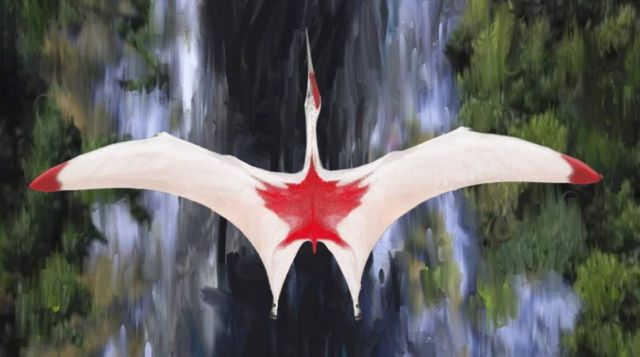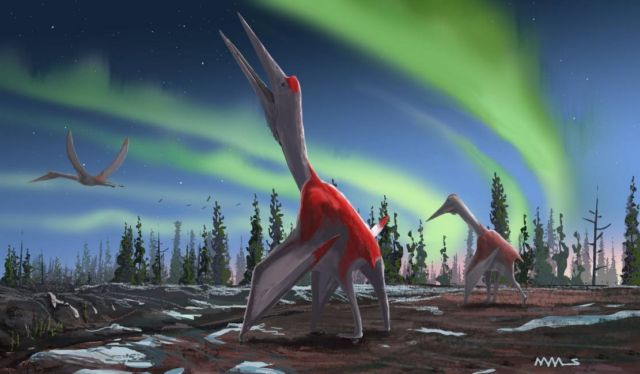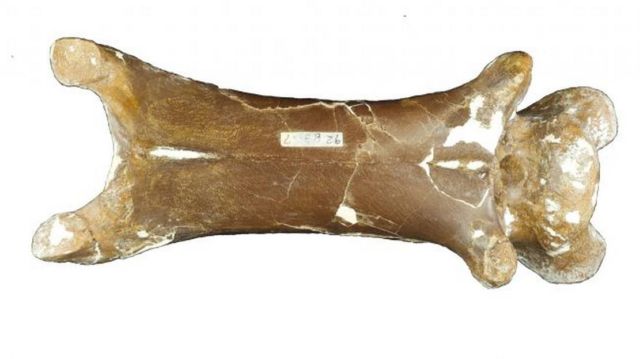Newly discovered giant Pterosaur flying reptile species was one of largest ever flying animals, soared across Canadian skies.
A newly identified species of Pterosaur is among the largest ever flying animals, according to a study from Queen Mary University of London.
Cryodrakon boreas, from the Azhdarchid group of pterosaurs (often incorrectly called ‘pterodactyls’), was a flying reptile with a wingspan of up to 10 metres which lived during the Cretaceous period around 77 million years ago.
Its remains were discovered 30 years ago in Alberta, Canada, but palaeontologists had assumed they belonged to an already known species of pterosaur discovered in Texas, USA, named Quetzalcoatlus.
Cryodrakon boreas, a newly described species of giant pterosaur, was recently identified from fossils found in Canada. Image: © Illustration by David Maas
The study, published in the Journal of Vertebrate Paleontology, reveals it is actually a new species and the first pterosaur to be discovered in Canada.
Dr David Hone, lead author of the study from Queen Mary University of London, said: “This is a cool discovery, we knew this animal was here but now we can show it is different to other azhdarchids and so it gets a name.”
Although the remains – consisting of a skeleton that has part of the wings, legs, neck and a rib – were originally assigned to Quetzalcoatlus, study of this and additional material uncovered over the years shows it is a different species in light of the growing understanding of azhdarchid diversity.
The main skeleton is from a young animal with a wingspan of about 5 metres but one giant neck bone from another specimen suggests an adult animal would have a wingspan of around 10 metres.
This makes Cryodrakon boreas comparable in size to other giant azhdarchids including the Texan Quetzalcoatlus which could reach 10.5 m in wingspan and weighed around 250 kg. Like other azhdarchids these animals were carnivorous and predominantly predated on small animals which would likely include lizards, mammals and even baby dinosaurs.
This bone is from the middle of the neck of Cryodrakon boreas; the front of the bone is to the left, and it measures about 7 inches (18 centimeters) long. Image credit: David Hone
source Queen Mary University of London








Leave A Comment